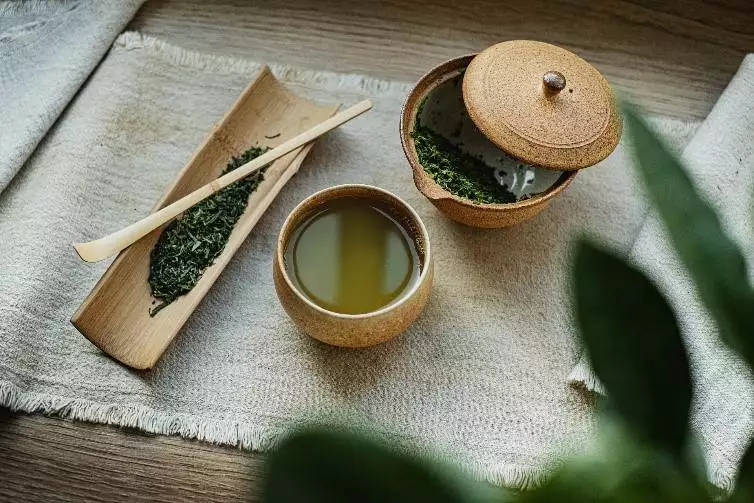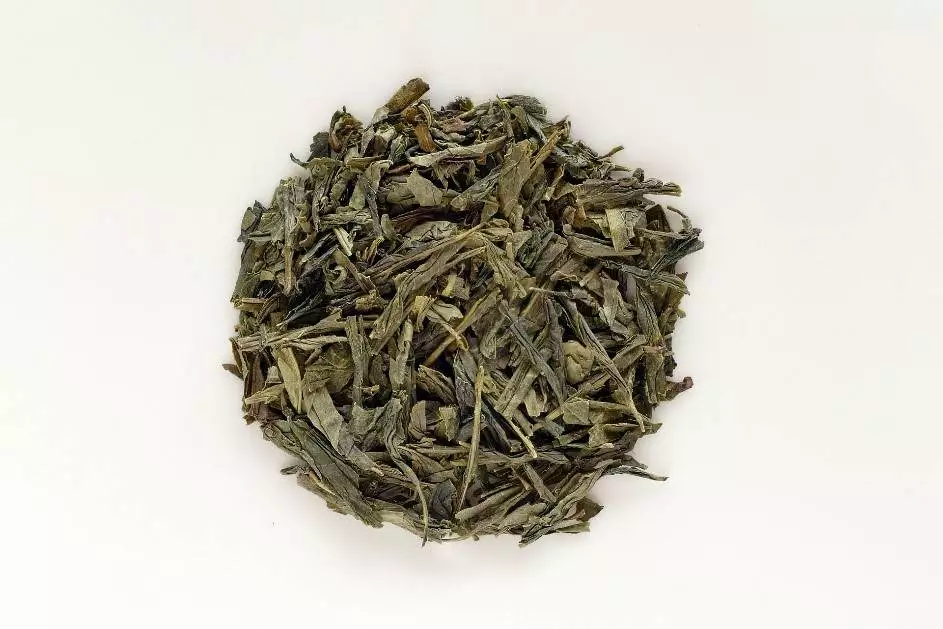
Types of Green Tea: Japan
The article explores the green tea industry in Japan, highlighting the variety of green teas available and the unique growing and shading processes that are employed to create them. The thesis statement based on this content could be: The Japanese green tea industry offers a wide variety of green teas with unique flavors, grown using shading techniques that result in elevated levels of health-promoting compounds, making them a popular choice for health enthusiasts worldwide.
In 1785, William Cowper’s poem, The Task, stated, “Variety is the very spice of life, that gives it all its flavor.” If you want variety and flavor, check out the Green Teas listed here.
Among all the areas where Green Tea is grown, it is mainly concentrated in the Orient. While growing tea in the U.S is nearly non-existent, some countries have burgeoning tea industries, such as China, Taiwan, Japan, India, Bhutan, Thailand, South Korea, Kenya, Nepal & Sri Lanka. We will focus on green teas from Japan.
In the 8th century, Japanese Buddhist Monks brought “Brick Tea” back from their journeys to China. This was a form of compressed tea leaves molded into a brick shape. The Monks retrieved seeds from the tea bricks and planted them.
Camellia Sinensis, the plant from which all tea derives, began to take hold in the Japanese landscape. The Monks began drinking their harvested tea and incorporated it into their religious ceremonies.
Today, Japan has a variety of tea types to choose from, especially the Green Tea type. Some of these are listed below. And by the way, so does China.
Sencha:
This is the most frequently consumed green tea in Japan, accounting for two-thirds of tea production. Under this method, the tea plants are grown in direct sunlight, and in the beginning of May, the leaves are ready to be harvested. They are then quickly steamed to prevent the leaves from oxidizing, which maintains the green color.

The leaves are then rolled to release all of the juices entrapped in them. Finally, the leaves are dried, which results in a very basic but popular type of tea. The dried leaves themselves have the look of straight, pointy shards. The taste is described as vegetal, like seaweed or grass.

Fukamushi-Sencha:
Considered budget-friendly, this type has been steamed approximately twice as long as Sencha. Fukamushi, quite literally means “steamed a long time.” It is generally known to be steamed 2-3 times longer than normal Sencha.
Consequently, the tea is darker and has a stronger, richer taste, but the aroma is reduced. The longer steaming times result in leaves that tend to crumble during the factory process and agitation in the package.
This might sound undesirable, but it is actually an advantage to your health because you end up consuming more of the leaf surface as it dissolves in your teacup.

Kabusecha:
This type involves a unique growing process using shade for a relatively short period of time before harvest. Coverings, sometimes called “reed screens,” are put on or above the tea plants in the latter stages before harvest. In the case of Kabusecha, this is done for approximately one week (7 days) before harvesting. This blocks some or most of the sunlight from hitting the plant.
New shoots of tea leaves sprout from the branches without the relative aid of the sun, resulting in darker leaves with higher levels of Theanine, less astringency, and end up having a more full-bodied flavor.
SHADING: Tea farmers use these “reed” screens or “cloth” coverings to implement a shading process that results in certain desirable characteristics in the teas. This light-depriving process varies in the number of days that it is implemented, depending on what type of tea they are trying to achieve.
This results in different flavors and aromas for each tea type. Covering the plants from the sun in this way also causes a richer “umami” flavor with a less bitter taste.
Shading can be classified into three types; ceiling or “shelf” covering, simple “tunnel” shading, and “direct” covering. All of these types are implemented on a widespread basis in Japan.

FUN FACT: Umami is a 125-year-old Japanese term, used to describe a taste that is neither sweet, sour, salty or bitter.
Gyokuro:
The name Gyokuro translates as “Jewel Dew” or “Jade Dew”. It is a coveted tea in Japan, that is usually reserved for special occasions. It has a rich green color but unlike most Sencha, which is grown using the Yabukita cultivar, Gyokuro is crafted from a special variety of cultivars such as Ashai, Okumidori, Saemidori, or Tamakai.
The process of growing Gyokuro, again, involves shading with screen or cloth coverings, but for a longer period of time, which is normally 20 days. The effect is the same as for Kabusecha, but the extended period of shading results in an even richer flavor.
Also characteristic of this type of tea is an additional reduction in astringency, higher levels of caffeine and chlorophyll, and elevated levels of the catechin called Theanine which will leave you feeling energized and uplifted. Theanine has been credited with stimulating brain activity.
Tencha:
Similar to Gyokuro and Kabusecha, this process, again, involves covering the tea plants so they are deprived of sunlight. Only this method of light deprivation lasts more than 20 days, often a month. The twist with Tencha is that after steaming, the leaves are not rolled but dried only. The third important element is that the woodier parts of the tea leaf, such as the stalk and the leaf veins, are removed. What remains are the more delicate parts of the leaf, and they are called Tencha.
Matcha:
A method of using Tencha tea leaves and stone-grinding them to create a powder that is then mixed directly into water to make a wonderful drink that allows you to consume the entirety of the leaf (and all of the nutrients). Tencha tea is used because of the shade-growing characteristics that are desirable for Matcha and because of the de-stemmed leaves.
The stone grinding, while a fairly simple process, has been something tea growers look at as proprietary, and they tend to keep this process somewhat guarded. Some of these farms have been in business 100 years, and their methods of stone grinding go back 800 years or more. They prefer to keep their age-old methods to themselves.
The grinding mills are usually hand-constructed at the plantation. Plantations employ their own “matcha stone mill-grinder” and even special artisans who hand-cut new grinding stones when needed. These stones are cylindrical shaped with a pattern of opposing cut grooves on the flat surface.
Tencha leaves are fed into a hopper that slowly funnels them down through the center of the top stone, settling in between the narrow gap of it and the bottom stone.
The top stone spins slowly against the static bottom stone, whereby the tea leaves get ground down to a fine powder and spill out of the outer gap to a collection tray. The revolution of the stones is an important consideration as they need to be moving slowly and consistently to reduce friction so as not to burn away any of the coveted nutrients. The typical rate of 30 revolutions per minute results in a production of 25-30 grams of powder per hour.

There are two grades of Macha. Ceremonial and Culinary.
Ceremonial grade is the most coveted and is used for traditional Japanese tea ceremonies. You can buy this same type of Matcha, but the cost may be prohibitive for some folks. Culinary-grade Matcha is less exclusive but is intended for purposes other than ceremonies.
There are five sub-categories of culinary matcha:
• Classic Matcha: The most generally accepted type for use during cooking, making smoothies & baking.
• Kitchen Matcha: Similar to baker’s chocolate, this bitter powder is best as a lessor-component to making an extract, for example.
• Café Matcha: This concentrate is used in higher cooking temperatures. It is less powdery and is best for pastries.
• Premium Matcha: Similar to Ceremonial but less expensive. Coffee and tea shops will use this type to make your hot or cold Matcha drink and conceal its more bitter taste with sweeteners.
• Ingredient Matcha: Is a blend of young and old Matcha leaves. Makes a bolder and darker drink and is best when used in recipes that require thicker mixtures.
Genmaicha:
Meaning “Brown Rice” is a tea that incorporates, just that, brown rice. The rice is allowed to retain its bran jacket and is then roasted to the point of popping (some amounts of popping are inevitable and sometimes desirable).
It is then mixed with Sencha tea to create a unique flavor combination. Since the approximate mix of 50 percent Sencha and 50 percent rice, it has low caffeine content, which makes it suitable for those who don’t want or can’t have a caffeinated drink.

Hojicha:
Starts with Sencha leaves, which are then roasted in a pan up to temperatures of approximately 203° F, then cooled. The leaves will turn from green to a more brownish color. Through the process of roasting, caffeine is “sublimated,” which means changed from a solid state to a gaseous one.
This makes Hojicha tea not as bitter as Sencha, and the leaves have a distinct roasted aroma. This process forms a mostly mild green tea that might suit the widest variety of palettes as it has a very light taste and is easier on your gastrointestinal system.
The Japanese look at this type of tea to be more of a hydrating beverage and was invented to be consumed in between fresh harvestings.
Shincha:
Sometimes called “Ichibancha”, Is defined not by the process but timing. Shincha green tea, means “new leaves” involving the first harvest of the growing season, which lasts until May.
This is sometimes referred to as “first flush” or “in-season.” Later pickings are called Nibancha, then Sanbancha. Up to four flushes per year can be harvested during the growing season.
Shincha has a chemical makeup known to have higher amounts (some say 3x more) of the Theanine than Nibancha, which provide for a sweeter taste.
Nibancha and Sanbancha are a little more bitter and have elevated astringency.

Kukicha:
Pronounced “cookie-cha,” is made from the stems and stalks of the Gyokuro and Sencha leaves and is aptly named “Twig Tea,” derived from a desire to drink tea in the dormant season of growing.
This type has a unique aroma and flavor among most teas. Known to have a nutty, creamy, and sweet flavor profile and can be stepped for 4 infusions.
So, there you have it, a good number of choices in Green Tea alone, all from Japan. Which one suits your palette?

Don’t forget to order your Green Tea from Lubba Tea Co. by going on lubbatea.com
Be sure to say “I’d Lubba Tea!”

Recent Comments